Nitrate‐n test as a guide to N fertilization of Weat in the mediterranean region

Authors:
Forty factorial experiments with 4 levels of N (0, 40, 80, and 120 kg N/ha and 4 levels of P (0, 8.8, 17.5, and 35 kg P/ha) with two replicates were conducted in farmers’ fields during two consecutive seasons in 1987 and 1988. The sites chosen had different soil fertility levels and the precedent crop was either local lentil (Lens esculentium), local chickpea (Cicer arietinum), or summer crop, such as watermelon (Citrullus sp.) or sunflower (Helianthus annum).
The mineral‐N (NO3 and NH4‐N) was determined in the soil profile down to 100 cm in 20‐cm increments. The NO3‐N concentration in the top 0 to 20 cm ranged between 3.2 and 17.6 mg/kg and NH4‐N between 2.9 and 18.3 ing/kg. The NaHCO3‐ extractable P for the 0 to 20 cm layer ranged between 1.0 and 11.8 mg/kg. Soils classification showed dominant suborders to be Typic Chromoxerert and Vertic Xerochrept.
At harvest, grain yield (GY), total dry matter (TDM) and total N uptake (TNU) were determined. To study the relationships between soil N contents and response of wheat to N fertilization, the relative yields of wheat were correlated with various N tests including the NO3‐N, NH4‐N, organic matter content, total N and the mineralization potential. It was found that:
i.
When all sites were considered, the NO3‐N or mineral‐N in the top 0 to 60 cm of soil at sowing correlated best with GY (r = +0.60), TDM (r = +0.71), and TNU (r = +0.77).
ii.
Using the Cate‐Nelson graphical method, the critical levels of NO3‐N in top 0 to 60 cm of soil that optimize grain yields were found to depend on yield goals and previous crops. It ranged between 8 mg/kg for wheat preceded with legumes (lentil and chickpea) and GY less than 2.5 T/ha, to 15 mg/kg for that preceded with summer crops and GY exceeding 4 T/ ha.
iii.
When low N sites only are considered (NO3‐N concentration with less than 7 ppm only), the mineralization potential tests becomes equal and even slightly superior to NO3‐N as the N test.
As a result, a model for making N recommendation for wheat was proposed based on yield goals, NO3‐N content in soil, previous crops, and N fertilizer efficiency.
